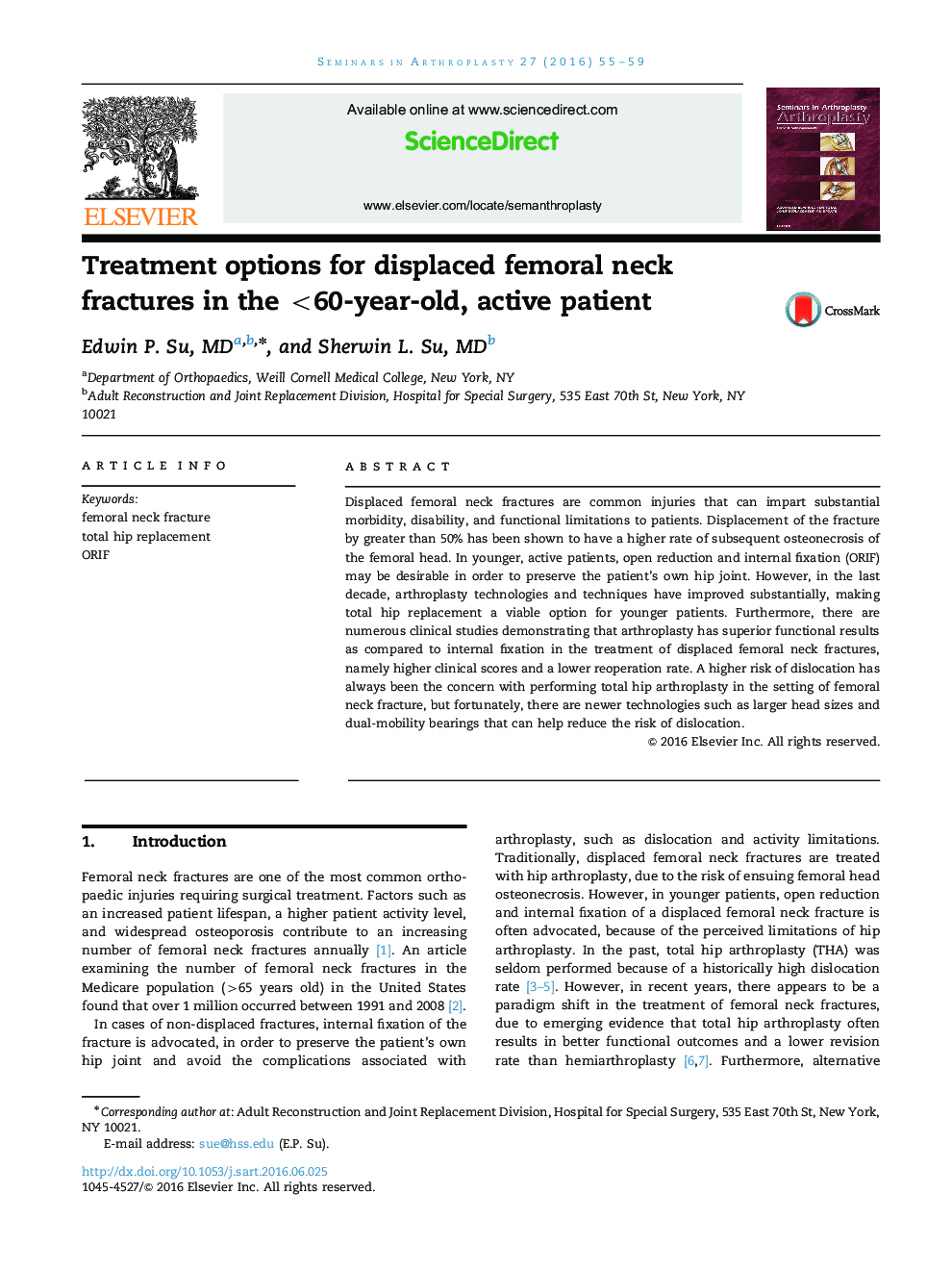| Article ID | Journal | Published Year | Pages | File Type |
|---|---|---|---|---|
| 5712384 | Seminars in Arthroplasty | 2016 | 5 Pages |
Displaced femoral neck fractures are common injuries that can impart substantial morbidity, disability, and functional limitations to patients. Displacement of the fracture by greater than 50% has been shown to have a higher rate of subsequent osteonecrosis of the femoral head. In younger, active patients, open reduction and internal fixation (ORIF) may be desirable in order to preserve the patient's own hip joint. However, in the last decade, arthroplasty technologies and techniques have improved substantially, making total hip replacement a viable option for younger patients. Furthermore, there are numerous clinical studies demonstrating that arthroplasty has superior functional results as compared to internal fixation in the treatment of displaced femoral neck fractures, namely higher clinical scores and a lower reoperation rate. A higher risk of dislocation has always been the concern with performing total hip arthroplasty in the setting of femoral neck fracture, but fortunately, there are newer technologies such as larger head sizes and dual-mobility bearings that can help reduce the risk of dislocation.
